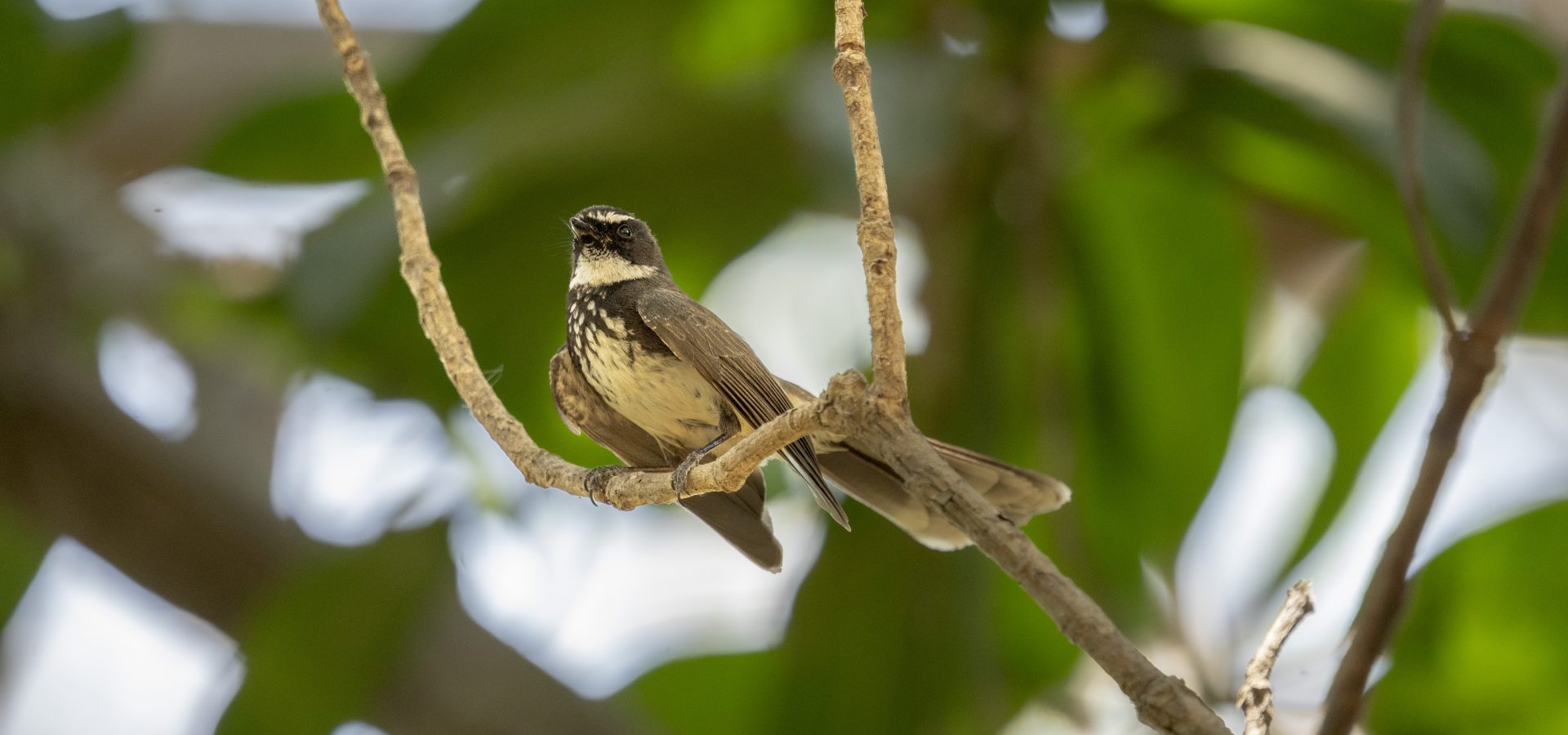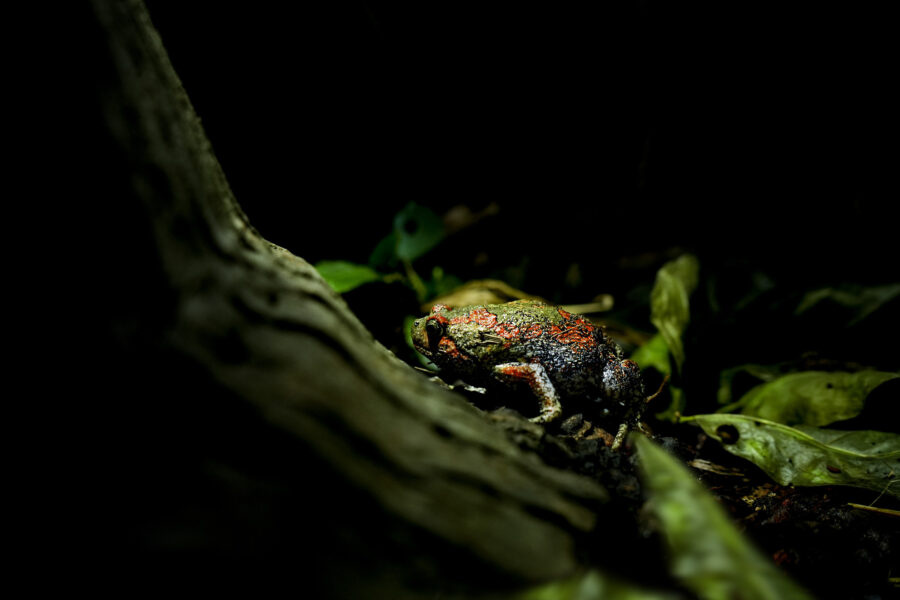Nestled within the expansive Western Ghats, the Manikdoh Leopard Rescue Centre (MLRC) and its surrounding areas in Maharashtra are bird watchers’ paradise. While the centre serves as a haven dedicated to giving a new lease of life for leopards rescued from distress, its location is known for being a rich hotspot for biodiversity. That is hardly surprising, as one of the three major rainforests of India finds itself in the Western Ghats, providing an ideal habitat for many rare and endemic species, including diverse forms of avifauna.
Along with leopards, the MLRC is home to mammals of varying sizes like civets, hares, wild boars, jackals, and hyenas while the herpetofauna consists of rat snakes, Indian kraits, spectacled cobras, Russell’s vipers, and checkered keelbacks.
However, certain peculiar sounds lead one to look up and around, only to find the diverse and delightful avifauna that exists at the centre. Ranging from commonly spotted sparrows and black kites to exquisite water birds like cormorants, herons, and egrets, our centre remains abuzz with the symphony of a thousand chirps!
Let us take you on a virtual birding trip through MLRC!
Focus your Binoculars on the Trees
Within the lush vegetation covering MLRC reside several passerines (perching birds) like the rose-ringed parakeet. While a common victim of the illegal wildlife trade, these brightly-coloured parakeets can seek easy shelter from prying eyes of poachers amidst trees. They can be spotted feasting on fruits of the Indian jujube and mahua trees.
The mango tree is another winner of the ‘Aves’ Choice Awards’. These sweet and juicy fruits of summer become favourites for black drongos, Indian robins, Oriental magpie robins, Asian koels, golden orioles and weaver birds to nibble on.
The promise of fruit and shelter offered by amla (Indian gooseberry), jamun (Indian blackberry) and Indian jujube trees also draws in frugivorous birds like coppersmith barbets and red-vented bulbuls.
Not all birds prefer to go with just fruit in their diet, however. Insects constitute a gourmet meal for many species, including fantails, Indian white-eyes, Indian rollers, Asian paradise flycatchers, and green bee-eaters. These birds are spectacular aerial acrobats as they flit through the air in pursuit of their prey!
Yet others like sunbirds, common ioras, treepies, hornbills, and mynas opt for a more balanced menu, feasting on fruits and flies alternatively. The vegetative cover of MLRC provides several safe spots for birds to rear the next generation. The baya weaver is one of the most remarkable architects among birds, and several of them can be spotted at the centre. Unlike cup-shaped nests, these birds weave hanging nests using long grass and leaves to protect and bring up their young.
However, not all parenthood is benign in the avifauna world. The centre also hosts several kinds of brood parasites like the common hawk-cuckoo. Cuckoos lay their eggs in the nests of birds like babblers that unwittingly care for them after they hatch, often at the cost of their own chicks.
Eye to the Ground
The ground is the best place to spot the hoopoe, a distant relative of the kingfisher. This bird was named after its distinguishing call, and can be recognised by a distinctive crown of feathers on its head. Hoopoes are insectivorous, and their slim and long beak helps them scrape the ground to locate various bugs.
While the bright hoopoe is easy to spot, the common quail and nightjar are avifauna that can surely go unnoticed. The two species blend perfectly into their surroundings owing to their pattern and colouration. Foraging for seeds and insects close to the ground, the rust-coloured common quail is the ultimate avian introvert. Though belonging to the same bird family, the quail maintains a rather low profile than the larger, brilliantly feathered, sexually dimorphic peafowl!
Taking up centre stage with their brilliant plumage, male peafowls or peacocks do not dance with open feathers to welcome the rain as it is popularly believed but they do so to attract a potential mate..
A Dive into the Water
The wetlands surrounding MLRC is an idyllic environment for many water birds and they truly make for a sight to behold. The centre is located within ten kilometres of the Pimpalgaon Dam, which forms a wetland for many residential and migratory birds. We have spotted kingfishers resting on the trees at our centre, and many cormorants, moorhens, and coots diving into the water to catch hold of their piscine prey. In the air, river terns wheel and dive for fish.
The shores of water bodies are rich with varied avians of different sizes, including cattle egrets, great egrets, glossy ibises, black ibises, Indian pond herons, black-crowned night herons, grey herons, and even large Asian openbill storks and woolly-necked storks! Flamingoes are frequent visitors to Maharashtra, choosing to migrate to the wetlands in the state to access food.
Our teams at Wildlife SOS have rescued several aquatic avifauna found in distress across the country. By tracing the edges of the water, one can even spot smaller waders like lapwings and sandpipers.
Birds in the City
For bird enthusiasts, MLRC is a great place to spot scores of birds in their natural habitats. Some birds like the spotted dove can be seen in large numbers at the centre, but have adapted to urban landscapes as well. Another example is that of sparrows: While house sparrows can be found across cities, yellow-throated sparrows from the sparrow family tend to dwell in light forested areas.
The black kite is another bird that can be frequently spotted riding the thermals over cities. Black kites and other birds of prey like buzzards, kestrels, sparrowhawks, vultures, shikras, and various species of owls roost in and around MLRC. Here, these birds can live their lives freely without catching the evil eye of superstition.
While several shikras freely rest amidst the foliage of our centre, the ones beyond our centre’s confines often have a different fate. In October 2022, we found a male shikra within a residence in the town of Junnar.
After a medical examination, it was revealed that its wings were fractured, which was why it was unable to fly. Thanks to Wildlife SOS’s timely intervention, this shikra got a chance to flap its wings once again.
The Need to Conserve Avifauna
The large and abundant biodiversity maintained by diverse plants, insects, avifauna, and other living organisms ensures an ecological balance in and around MLRC, and highlights the necessity of conserving wildlife hotspots. However, rising anthropogenic activities such as habitat degradation, hunting, superstitious beliefs, and human-induced climate change disturb the natural world and threaten various birds across multiple landscapes.
A large reason behind the overall neglect and misconceptions of birds is the lack of general knowledge about them. Avifauna form an essential part of the wild as well as cityscapes. A simple initiative that we can take up individually to help birds in the city is by placing a bowl of water for them outside our homes to help them combat the scorching summer heat. We encourage bird enthusiasts to spread awareness on birds and ethical birdwatching skills as well. If you happen to see a bird in distress and are based in any of our operating cities, immediately reach out to our Rapid Response Units:
Delhi NCR: +91-9871963535
Agra, Uttar Pradesh: +91-9917109666
Vadodara, Gujarat: +91-9825011117
Srinagar, Jammu and Kashmir: +91-7006692300/ +91-9419778280





